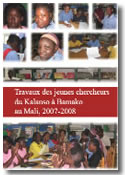Promotion and self-promotion: Women may fail to win chairs because they do not cite themselves enough September 19, 2013
ONE of academia’s deficiencies is that, though its lecture halls and graduate schools are replete with women, its higher echelons are not. Often, this is seen as a phenomenon specific to the sciences. A report published in 2008 by America’s National Science Foundation, for example, found that in most fields of science and engineering male full professors outnumbered females by nearly four to one. In fact, the disparity applies to the whole grove. Another report from 2006, by the American Association of University Professors, found the same ratio in the faculties of arts, humanities and social science, too.
Observers are divided about the cause. Some think the system’s androcracy simply perpetuates itself, as powerful men promote other men to positions of power. Others believe that because women more often step off the career ladder to raise children, they thereby put themselves at a disadvantage in the cut-throat competition for preferment when they return to work. A few even cling to the idea that at the highest levels of some subjects (maths, physics and engineering are those usually cited) male brains are more likely to be attuned to what is required than female ones are-though most keep quiet about that particular opinion, having seen the public roasting dished out to Larry Summers, then president of Harvard University, in 2005, when he dared to suggest some research supported it.
Barbara Walter, of the University of California, San Diego, however, offers a fourth explanation: that female academics are not pushy enough. Specifically, she says that unlike their male colleagues they do not routinely cite their own previous work when they publish a paper. Since the frequency a paper is cited is an indicator of its importance-and one which, since it can be measured, tends to weigh with appointment committees-a systematic unwillingness by women to self-cite may help tip the balance against them.
To test whether women academics do self-cite less than men, Dr Walter and her colleagues reviewed more than 3,000 articles published between 1980 and 2006 in the top 12 peer-reviewed journals of their own field, political science. They were looking for two things: the sexes of the authors (grouped as all female, all male or mixed) and the number of citations each publication subsequently received. The authors stopped at the end of 2006 to allow each article at least five years to gather citations (they did the count in 2012).
Their results, just published in International Organization, show that any given publication was cited, on average, 25 times. Those with an all-male author list were, however, cited by five more papers than those with an all-female list.
Partly, this was caused by men citing themselves more often than women did. But Dr Walter also showed that men cite other men more often than chance would suggest they should, so the obvious remedial action appointment committees might take, of discounting self-citation from their calculations, would not completely correct the problem.
Dr Walter has done no formal research on why the propensity of the sexes to self-cite differs, but her anecdotal evidence-picked up at conferences where she has presented these findings-is that women see self-citation as a form of self-promotion, and thus look down on it. Men see it the same way, but draw different conclusions. For the record, the number of citations in Dr Walter’s paper which refer to "Walter, B" as an author is zero.
Aug 31st 2013 | | The Economist (print edition)




Leave a Reply